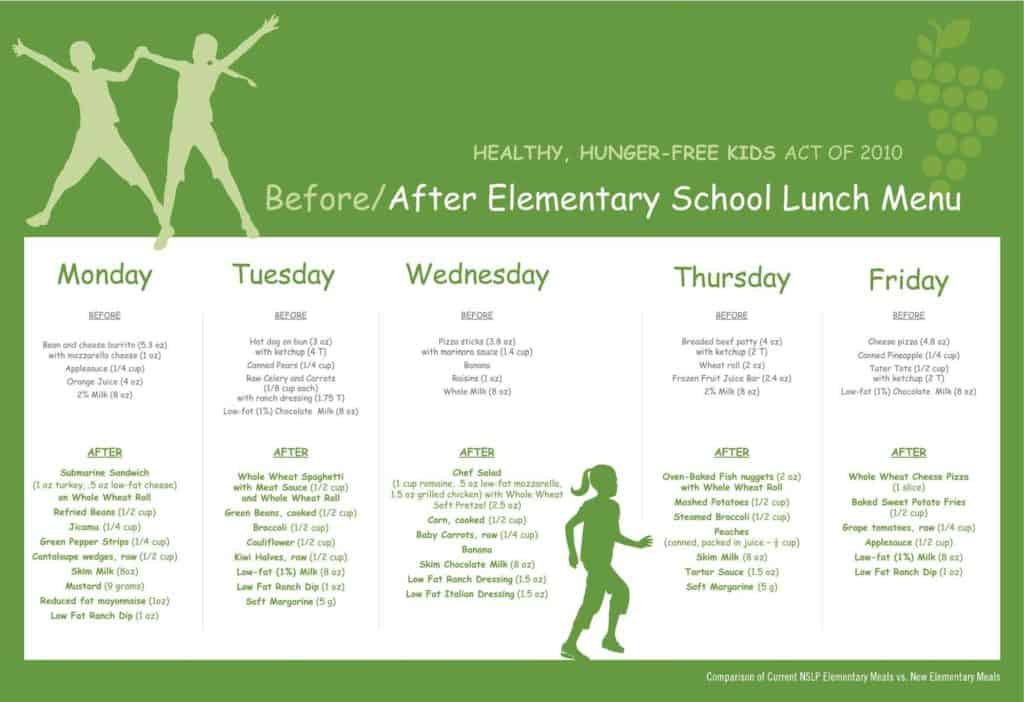On January 25th, I was invited to take part in a conference call preceding First Lady Michelle Obama’s announcement of the new National School Lunch Program standards. Hosted by Agriculture Secretary Tom Vilsack and Chef Rachael Ray, the purpose of the call was to update the media and other involved parties on the changes to the standards before the official announcement was made. These changes are a step in the right direction. As common sense as they seem, these improvements are truly revolutionary, and they will help ensure a higher standard of school food for the millions of children eating school lunches like these every day. But we should guard against allowing ourselves to think for one minute that our work is done or that the problem of substandard school food is solved.

In essence, the USDA’s new standards will force positive changes to nutrition in all schools receiving federal reimbursements for the meals they serve. Most schools don’t enjoy the outside support provided by the chefs, non-profits and community members who have been leading the charge for lunch reform you’ve probably heard about in the news. The stark fact is that most school districts can’t or won’t improve things, and they are forced to–or they choose to–adhere to the bare minimums required to receive their federal money for the food they serve.
The USDA’s new rules set a new benchmark for what’s “good enough,” and in my opinion, any improvements over what was good enough before is a good thing. Let’s take it for what it is: it’s much better than what we had before, and it’s a stronger foundation to build from. It’s a solid start. A quick look at the sample menu the USDA released shows how dramatically the new regulations will improve the healthfulness of school lunches everywhere.
“We want the food they get at school to be the same kind of food we would serve at our own kitchen tables,” Secretary Vilsack remarked as he outlined the major changes parents can expect to see in the improved school lunches, which include:
-More whole grain or grain-rich foods
-Elimination of full-fat milk
-Increased calorie mindfulness
-Concentrated focus on reducing saturated fats, trans fats and salt in foods
-More fresh fruits and vegetables
I’ll tell you what: I approve. These changes are sensible, easy to implement, cost-neutral or even cost-saving changes that my experience tells me every school in this country can make with little to no trouble. They allow schools to retain local control over menu development and they allow meals that kids like to stay on the menu. Whole wheat hamburger buns or pizza dough costs the same as white. 1% milk is actually cheaper than whole where I live. Monitoring calorie and fat content is free and important. Lower sodium levels will discourage processed foods, which improves the overall healthfulness of meals. Fruits and vegetables are cheap, so serving more–or replacing processed items with them–makes all the sense in the world with the same (or perhaps even less) labor required.
Is this the solution? Is our work done? Of course not. It still represents the bare minimum. But even though I believe that America’s kids deserve better than this, I’m all for raising the bar on what the bare minimum looks like until our priorities as a nation–where we’re willing to spend and how hard we’re willing to try–are refocused. During the conference call, Rachel Ray remarked, “That tray…is going to have leafy greens, colorful fruit. If that tray happens to have pizza or French fries, that doesn’t negate the other great things on [it].” Well, amen, Rachel Ray. Pizza and salad is better than pizza and chips. When things are as bad as they are, every a little change is a revolution.
I see the USDA’s new standards as a meaningful step toward a better model, but we need to keep working to build that next step and the one after that. I hope it doesn’t take the USDA another 30 years to issue its next set of improved standards, but those of us who care so deeply about school lunch reform should keep operating as though we’ll never see another one again in our lifetimes.
School food directly affects the intellectual and physical development of our children. More importantly, their emotional health is affected by the messages we send with the priorities we set. I’m not going to allow my children to believe that I think what they’re served is what they deserve, but I commend the USDA for their improved standards; again, I believe that they will meaningfully improve the health of millions of children. I will not, however, change anything I’m doing because of them. We need to continue the fight for excellence, if only to send a message to our kids: you’re worth this fight, and you’re worth more than the bare minimum, even this new and improved one.